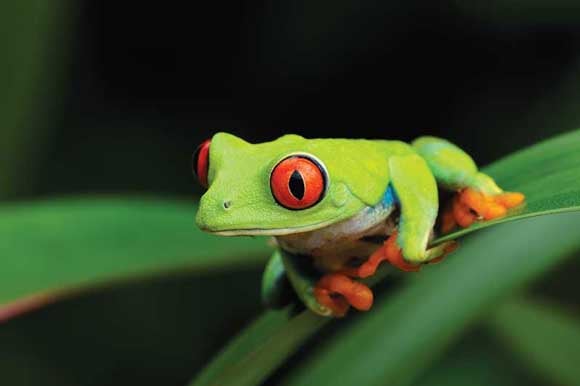Macro Photography – Macro photography kit bag
Robert’s Kit
1. Nikon D3
The D3 is an astonishing camera particularly at higher ISO settings. The large LCD screen is an invaluable aid in the field for checking image sharpness.
2. Nikon D2X (x2)
I use the D2X when I need higher magnifications and with stacking lenses. The same images, if taken on a D3, would frequently require cropping, reducing the overall file size.
3. Mamiya Pro TL
The vast majority of my work these days is digital, although I do still shoot with film on some of the long-term projects I am currently working on.
4. Uni-Loc tripods
For consistency and quality I shoot virtually every image I can from a tripod, only resorting to a monopod or handheld when conditions or the terrain make it difficult to use one. I currently use two sizes of Uni-Loc, each fitted with a specially designed movable platform head or working at higher magnifications. The Manfrotto quick-release bracket and plates were also custom-made for me by Manfrotto.
5. Macro lenses
I use a 105mm and 200mm micro Nikkor on the D3 and D2X, and a 120mm macro on the Mamiya. The 200mm is my most frequently used lens. It gives me extra working distance when photographing shy and mobile subjects, with less chance of hitting the surrounding vegetation. The built-in tripod collar also allows me to change the format without having to tilt the whole camera assembly. The narrow angle of view helps to control background clutter, producing a more diffused result. The 105mm and 120mm are useful in tight situations where I have restricted room to manoeuvre or in situations where I have to handhold the camera.
6. Telephoto lenses
I use a Nikon 300mm telephoto for portrait shots of orchids and fungi and the like, when I want to create a soft, diffused look to an image where the background and foreground is well out of focus.
7. Wideangle lenses
The 24-70mm on the D3 and 17-55mm on the D2X are my most frequently used zoom lenses. I find them indispensable when I want to illustrate a subject in relation to its habitat.
8. Flash units
Flash is an essential part of the macro photographer’s kit. Apart from my own bracket designs I frequently use the Nikon R1C1 and SB29s macro flash on small subjects and at high magnifications, and for shadow control on sunny days. For fill-flash I use a single flash on the R1C1, which I can rotate to whatever position I need. I use two Nikon SB800’s (cordless) off camera, with the commander unit from the R1C1 when I need more power and height. The Metz units are used with the Mamiya’s in similar situations.
Other Kit
Extension tubes (Nikon and Mamiya)
I use these to increase magnifications and make lenses focus closer than their minimum focusing distance.
Electronic cable release
This is absolutely essential for reducing vibration during longer exposures.
2x Mamiya converter
Doubles the magnification on the 120mm macro for smaller subjects.
Polariser filter
For reducing or eliminating reflection on foliage of plants.
Custom flash bracket
Used in rock pools and in situations where I need to increase the distance between the flash units and subjects.
Memory cards
I don’t use cards above 4GB in case of failure. I use the second card slot in my D3 either as backup on the first card, or as an overflow.
Reflectors x2
For diffusing direct sunlight on subjects, especially flowers.
Knee pads
These save your knees when working at ground level on rocky terrain.
Epson P-3000
I no longer carry a laptop with me in the field or when travelling. I can download cards anywhere and the high-quality screen allows me to do an initial edit of my Raw files back at base.





